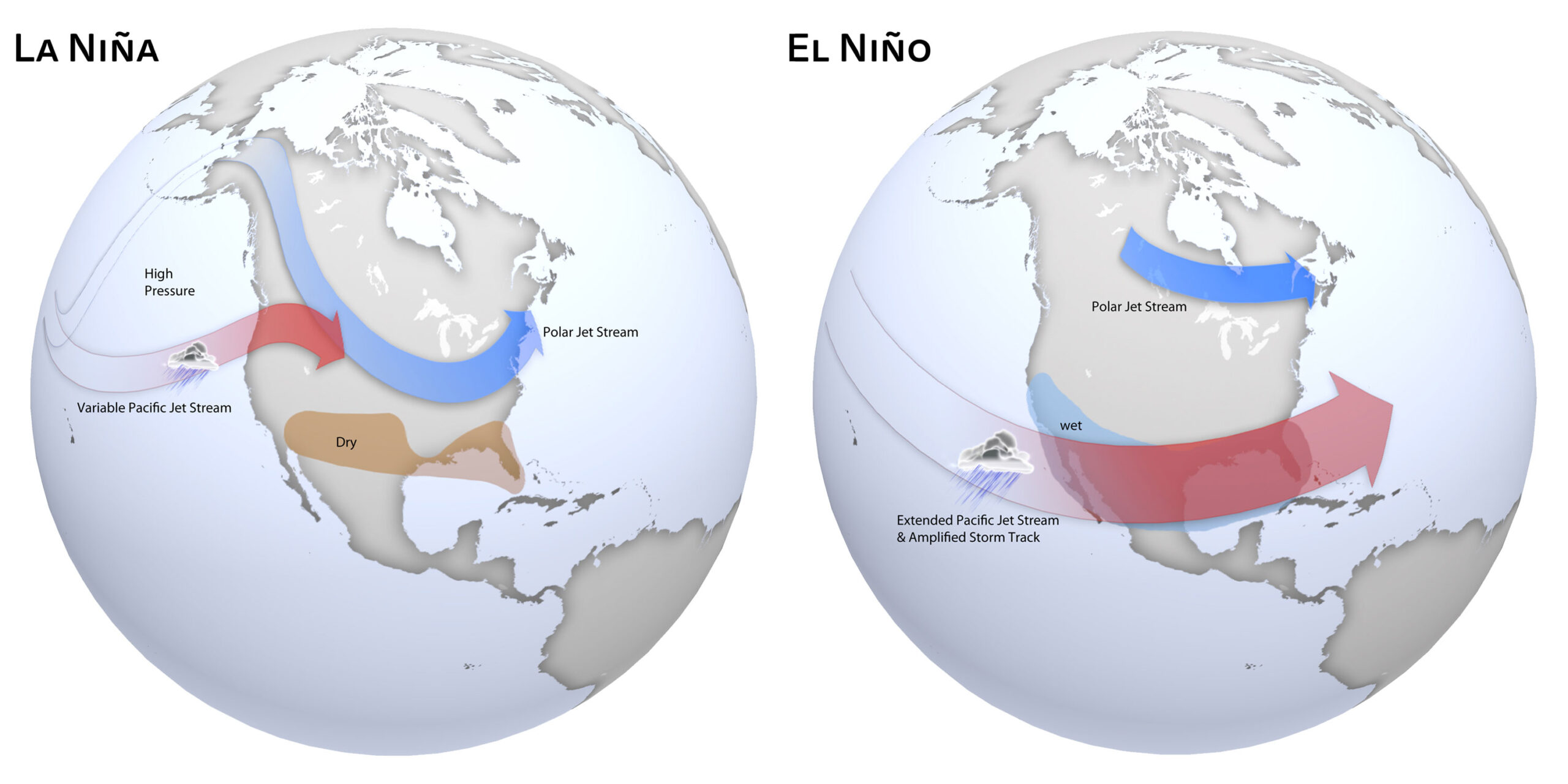El Nino and La Nina Global Impact. #2030
How El Nino and La Nina affecting Climate Globally.
The El Niño-Southern Oscillation (ENSO) is a natural climate phenomena that has two opposing phases: El Niño and La Niña. Both events have significant impacts on global weather patterns, although in opposite ways. They originate in the tropical Pacific Ocean but affect weather systems worldwide, causing disruptions ranging from droughts to floods, and influencing temperatures, precipitation, and storm patterns.
El Niño
When sea surface temperatures in the eastern and central Pacific Ocean rise above normal, El Niño happens. This warming disrupts the typical atmospheric circulation patterns, weakening the trade winds that usually blow from east to west across the Pacific. As a result, warm water that is typically concentrated near Asia and Australia shifts toward the Americas. El Niño typically causes more rainfall and warmer-than-usual temperatures in parts of North and South America, particularly the western coasts of the U.S. and South America, leading to increased storm activity, flooding, and even wildfires. In contrast, regions like Southeast Asia, Australia, and parts of the Indian Ocean often experience droughts and higher temperatures, resulting in crop failures and water shortages.
La Niña
The opposing ENSO phase, known as La Niña, is typified by lower-than-normal sea surface temperatures in the eastern and central Pacific. In this phase, the trade winds strengthen, pushing more warm water toward the western Pacific and promoting upwelling of cold waters along the coast of the Americas. La Niña often leads to cooler and wetter conditions in the Pacific Northwest and the northeastern United States, while regions like the southern U.S., parts of South America, and Australia typically experience droughts. Additionally, because of changes in atmospheric conditions, La Niña tends to promote more active hurricane seasons in the Atlantic.
Global Impacts and Predictability
El Niño and La Niña, the two phases of the El Niño-Southern Oscillation (ENSO), have far-reaching global impacts on weather patterns, agriculture, and economies. The effects of these phenomena can vary greatly depending on the region and the phase. El Niño typically brings wetter conditions to parts of North and South America, increasing the risk of floods and storms, while causing droughts and heatwaves in Southeast Asia, Australia, and parts of Africa. Conversely, La Niña often results in cooler, wetter weather in the Pacific Northwest and northeastern U.S., but dry conditions in the southern U.S. and parts of South America. Both phases can influence global hurricane seasons, crop yields, water availability, and biodiversity, making them significant drivers of both natural disasters and economic shifts.
Predicting El Niño and La Niña events has become more accurate over the years, thanks to advances in climate modeling and oceanic monitoring. Scientists track sea surface temperatures, wind patterns, and atmospheric pressure to forecast the likelihood and intensity of these phenomena. However, their unpredictable nature makes precise long-term forecasting challenging. While short-term predictions have improved, the complex interactions between the ocean and atmosphere mean that scientists are still working to enhance prediction models and mitigate the impacts of these powerful climate events. Global alerts on climate change have become increasingly vital as the planet faces escalating environmental challenges. These alerts, issued by governments, scientific bodies, and environmental organizations, provide real-time data and warnings about extreme weather events, rising sea levels, and shifting ecosystems. They aim to raise awareness, guide policy decisions, and prompt action to mitigate damage. As the effects of climate change intensify, global alerts are crucial for disaster preparedness, resource management, and promoting sustainable practices. By fostering global cooperation and urgent response, these alerts help protect vulnerable communities and safeguard the future of the planet.
Also Visit:-
